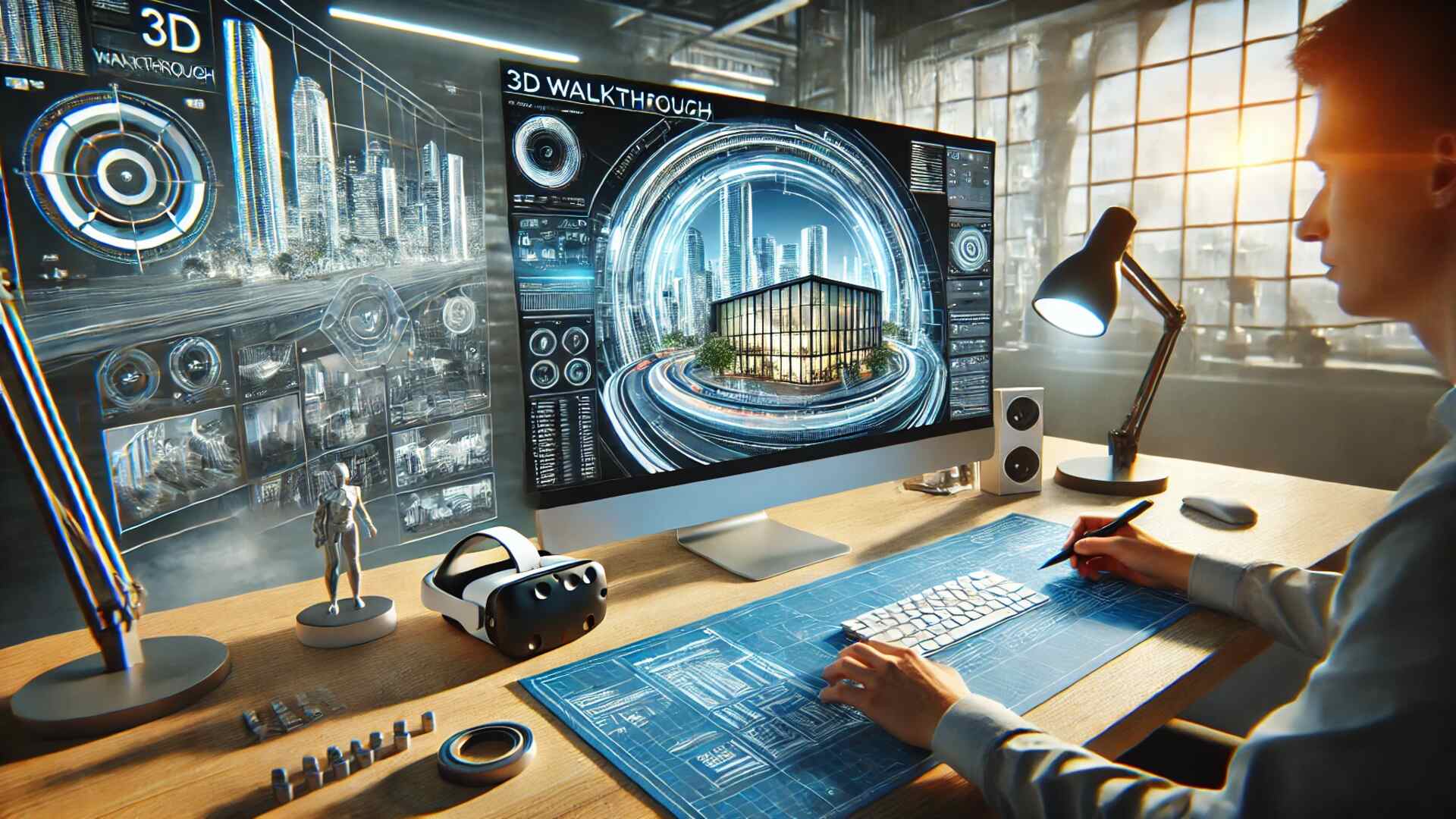How to Create Captivating 3D Walkthroughs?
Posted On: March 01, 2025
Posted By: Mayabious Art
Many people talk about 3D walkthroughs. How good it is, but what exactly is it? Let us find out!
A 3D walkthrough is an animated video. It is created using the digitisation process of a space to be explored by viewers. Giving them an actual immersive experience design. Thus, it encompasses architectural designs, interiors, and landscapes in realistic immersive experiences. Such types of videos are used by architects, real estate developers, and interior designers. They use it to demonstrate their ideas in a visually effective interactive manner.
Now, let us explore more.
Importance of 3D Walkthroughs
The following points give light to the importance of 3D Walkthroughs:
Clients and investors can see the final product before construction starts.
No ambiguity between architects, designers, and stakeholders.
Boosts visual promotions of properties with eye-catching showcases.
Easier for clients and investors to decide, also saves time and money identifying design errors, saving in the long run.
The Procedure for Crafting Exquisite 3D Walkthrough
1. Understanding the Project
Before designing a walkthrough, the 3D artists are required to acquire all the relevant information:
- Architectural plans, blueprints or CAD drawings
- Specifications of materials and textures
- Theme and colour schemes for the design
- Description of lighting and environment
A detailed brief ensures accuracy and alignment with the client’s vision.
2. 3D Modeling: Constructing the Digital Structure
With 3D modelling software, artists create a virtual structure that encompasses all aspects of a project. This step includes:
- Defining the shape and layout of the building
- Adding floors, walls, windows, and other architectural elements
- Scale and proportion accurate
Some common tools include Autodesk 3ds Max, Blender, SketchUp, and Revit.
3. Texturing: The Surface Comes Alive
Textures make the walkthrough realistic. A few important points:
- Attaching highly detailed textures to surfaces like wood, glass, metals, and fabrics
- Make sure all materials bounce light in a realistic manner
- Fixing other details like wall finishes, flooring, and furniture
4. Lighting: Creating the Atmosphere
The different types of lighting in making a walkthrough aesthetic:
Simulating Sunlight and Shadow Effects
Ceiling Lights, Lamps, and Decorative Fixtures
Adding Depth, Realism and Personality
5. Camera Path & Animation
- Some points to make it realistic:
- Define the camera path for smooth movement
- Adjust angles for the key areas
- Make it feel natural, like how a person would walk through the space
6. Rendering: Frames to a Video
Rendering takes up the time. It:
- Turns 3-D models into frames of the highest quality
- Adds shadows, reflection, and fine detail
- Processes the frames to make a video sequence
Achieve photorealistic results with Lumion, V-Ray and Unreal Engine.
7. Post Production: Applying the Finishing Touches
In this phase, the video touches:
- Colour correction to improve visuals
- Background music and voice-over or copy on storytelling
- Motion blurring and depth-of-field-type effects
Adobe Premiere Pro and After Effects are used to refine the output.
The Sciences Behind an Exceptional 3D Walkthrough:
1. Realism and Accuracy
- Use high-resolution textures and materials
- Pause precise lighting and shadowing
- The accuracy of proportions and scales
2. Flow and Smooth Navigation
- Movements are natural and fluid along their paths
- Make sure to highlight key design points
3. Emotion and Storytelling
- Warm lighting for comfy interiors
- Dynamic shots for dramatic architecture
- Music synced to visuals makes for an amazing experience
Industries That Use 3D Walkthroughs
1. Real estate and property development
- Premise pre-sold before construction
- Presents luxury apartments, villas, and commercial space
2. Architecture & Interior Design
- Presents to clients what entails his idea most with the help of immersive visuals
- Via the presentation scope, interiors can now play around with options in layouts and materials
3. Hospitality and Retail
- Designing hotel resorts and shopping malls
- Tailoring store layouts to fit customer experience
4. Industrial and Infrastructure Projects
- Visualising factories, warehouses and bridges
- Planning of city developments or smart infrastructures
Future Trends of 3D Walkthroughs
1. Virtual Reality (VR) & Augmented Reality (AR)
- The user will now enter the designs while wearing VR headsets
- Add to the whole experience with interactive components
2. Rendering through AI
- Reducing time smartly by optimising rendering time
- Using machine learning methods to enhance optimisation and realism
3. Cloud-Based 3D Visualisation
- Real-time walkthroughs are possible from any device
- This does away with holding up remote teams
Conclusion
Creating an impressive 3D walkthrough is an artistic endeavour that also requires science. It combines technical skills with artistry and sophisticated technology to sculpt visions of architecture into reality. The revolutionary experience 3D walkthroughs today offer the user is a total game changer. Whether for real estate marketing, architectural visualization or interior design, the way people perceive spaces is transforming. With technological upgrades every day, soon a time will come when 3D Walkthroughs will look more real than ever. They are here to create waves in the future world. It is not far off but will happen in the near future.
